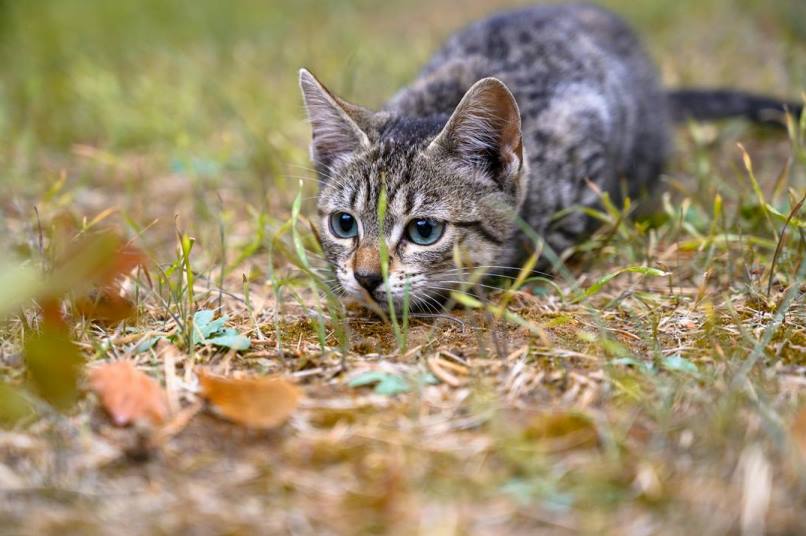In this Article
Homemade Cat Food for Picky Eaters: Balanced Recipes & Vet Tips
A practical, mobile-friendly guide to simple, vet-aligned recipes that tempt finicky cats while staying close to feline nutrition targets. Always consult your veterinarian before switching diets, especially for kittens, seniors, or cats with medical conditions.
Homemade Cat Food: Pros & Cons (What Matters for Picky Eaters)
Pros
- Custom texture & aroma: Warm, soft pâtés or tiny shreds can unlock appetite in selective cats.
- Ingredient control: You choose proteins, limit additives, and avoid known triggers.
- Hydration boost: Moist homemade meals can help cats that won’t drink much water.
- High palatability: Freshly cooked meats typically smell and taste stronger than many kibbles.
Cons
- Nutrient balance risk: Cat diets must meet essentials (taurine, calcium, vitamin A) — use a complete feline premix.
- Time & consistency: Batch cooking and precise measuring are required.
- Food safety: Strict hygiene and refrigeration/freezing are non-negotiable.
- Medical nuances: Some conditions (kidney, GI, allergies) need a vet-formulated plan.
“Home-prepared diets can be appropriate if they are complete and balanced and the pet is monitored regularly by a veterinarian.” — WSAVA Global Nutrition Guidelines
If you’re new to DIY cat food, replace just one daily meal at first and monitor stool, coat, and appetite for 10–14 days.
Target Macro Balance (by Calories)
Research suggests many cats self-select around ~52% protein, ~36% fat, ~12% carbs by energy — use this as a directional target, then fine-tune to your cat’s body condition.
“Adult cat foods meeting AAFCO profiles provide at least 26% protein (dry-matter basis). Taurine minimums differ by format (higher for canned).” — AAFCO/FDA overview (complete & balanced)
Use a complete feline supplement premix (per label) to cover micronutrients consistently; examples include commercial “feline complete” blends formulated for home cooking.
5 Easy, Balanced-Lean Recipes for Picky Cats
All recipes yield ~4–6 × 80–90 g portions. Always mix in a complete feline premix per manufacturer’s instructions (covers taurine, calcium, vitamins & minerals). For extra aroma, warm to body-temp and add 1–2 tsp water right before serving. Optimized for the long-tail query: easy homemade cat food for picky eaters.
1) Gentle Chicken & Pumpkin Pâté
Ingredients (approx.):
- 400 g cooked skinless chicken thigh, finely minced
- 120 g plain pumpkin purée (unsalted)
- 50–80 g low-sodium chicken broth (for texture)
- 1 tsp salmon oil (optional aroma)
- Feline complete premix per label
Steps:
- Cook chicken thoroughly; mince or pulse for a soft pâté.
- Fold in pumpkin and broth until creamy; blend if your cat prefers smooth textures.
- Cool to lukewarm; mix in premix (dose for batch weight).
- Portion into 80–90 g tubs; refrigerate or freeze (see storage).
- Serve warmed (not hot); add 1–2 tsp warm water for aroma.
Approx. per 100 g: Protein ~16–18 g; Fat ~6–8 g; Carbs ~3–5 g; ~140–165 kcal.
2) Turkey, Quinoa & Broth Shreds
Ingredients (approx.):
- 350 g cooked ground turkey (≈93% lean)
- 120 g cooked quinoa, rinsed well
- 80–120 g warm, low-sodium broth
- 1 tsp refined safflower or canola oil (optional)
- Feline complete premix per label
Steps:
- Brown turkey; drain any excess fat.
- Stir in quinoa and broth to reach a soft, spoonable mix.
- Cool to lukewarm; stir in premix thoroughly.
- Portion, chill, and serve slightly warmed.
Approx. per 100 g: Protein ~15–17 g; Fat ~5–7 g; Carbs ~5–7 g; ~140–160 kcal.
3) Salmon & Sweet Potato Mash (high aroma)
Ingredients (approx.):
- 350 g boneless salmon, fully cooked and flaked
- 120 g mashed sweet potato (plain)
- 40–60 g warm water or unsalted fish stock
- Feline complete premix per label
Steps:
- Poach or bake salmon until opaque; flake fine and remove skin/bones.
- Mash with sweet potato and liquid to a soft, moist texture.
- Cool slightly; mix in premix evenly.
- Portion and chill; serve at room temp or slightly warm.
Approx. per 100 g: Protein ~17–19 g; Fat ~7–9 g; Carbs ~3–4 g; ~155–175 kcal.
4) Beef & Liver Pâté (tiny liver boost)
Ingredients (approx.):
- 320 g lean beef (chuck or round), cooked and finely minced
- 60 g beef liver, lightly sautéed and minced (≤10–15% of batch)
- 80–120 g warm low-sodium beef broth
- 1 tsp refined oil (optional, for softness)
- Feline complete premix per label
Steps:
- Sauté beef; mince to a smooth, soft crumble.
- Cook liver lightly; fold in.
- Add broth for silky pâté; cool to lukewarm; mix in premix.
- Portion and store properly.
Approx. per 100 g: Protein ~18–20 g; Fat ~8–10 g; Carbs ~1–2 g; ~170–190 kcal.
5) Rabbit & Green Bean Mince (lean & simple)
Ingredients (approx.):
- 380 g cooked ground rabbit (or chicken breast substitute)
- 80 g finely chopped, soft-cooked green beans
- 50–90 g warm broth
- Feline complete premix per label
Steps:
- Cook mince; chop very fine (or quick-pulse).
- Fold in beans and broth; adjust to preferred softness.
- Cool; stir in premix evenly; portion and chill.
Approx. per 100 g: Protein ~17–19 g; Fat ~4–6 g; Carbs ~2–3 g; ~130–150 kcal.
For an average 4 kg adult, total daily energy is often ~180–220 kcal (monitor weight & appetite). Split into 2–3 meals.
Blend to smooth pâté; warm slightly; add 1–2 tsp water; serve in a shallow dish.
Rotate proteins weekly (chicken ↔ turkey ↔ fish ↔ beef) to reduce fussiness.
Recipe Quick Compare (approx., as prepared)
| Recipe | Protein (g/100g) | Fat (g/100g) | Carbs (g/100g) | Energy (kcal/100g) | Best for |
|---|---|---|---|---|---|
| Chicken & Pumpkin | 16–18 | 6–8 | 3–5 | 140–165 | Gentle tummy, first DIY |
| Turkey & Quinoa | 15–17 | 5–7 | 5–7 | 140–160 | Soft shreds; mild flavor |
| Salmon & Sweet Potato | 17–19 | 7–9 | 3–4 | 155–175 | Aroma-driven picky eaters |
| Beef & Liver Pâté | 18–20 | 8–10 | 1–2 | 170–190 | Iron-rich palatability |
| Rabbit & Green Bean | 17–19 | 4–6 | 2–3 | 130–150 | Lean option; lighter fat |
Values are approximate; exact nutrition varies with cuts, cooking method, and premix used.
Storage & Safety (must-do for DIY cat meals)
- Chill fast: Refrigerate portions within 1 hour of cooking. Keep fridge ≤4°C (≤40°F). Freeze what you won’t use in 48–72 hours.
- Reheat gently: Warm to body-temperature; never serve hot. Discard leftovers left out >60 minutes.
- Hygiene: Wash hands, utensils, and bowls after each feed. Use clean, shallow dishes.
- Raw caution: Raw meats/bones carry higher contamination risk and can cause injuries; cook thoroughly for safety.
- Premix every batch: Essential for meeting taurine, calcium, vitamins, and trace minerals consistently.
“Promptly refrigerate or discard unused wet pet food; keep refrigerators at ≤40°F (4°C).” — U.S. FDA, pet-food handling
For an average 4 kg adult cat, daily energy often falls near ~180–220 kcal. Adjust to keep ideal body condition; ask your vet for a personalized plan.
Quick FAQ for Picky Eaters
How do I transition? Mix 25% new food with 75% current food for 3 days, then 50/50 for 3 days, then 75/25 for 3 days. Slow down if you see soft stools.
My cat refuses new textures. What now? Try warmer temperature, finer blend, a tiny splash of tuna water, or rubbing a bit on the gums so they taste it.
What about taurine? If you use a feline premix as directed, taurine is covered. If not, consult your vet about additional taurine and calcium sourcing.
Can I skip liver? Yes; keep organ amounts modest (≤10–15%) and rely on your premix for vitamins and minerals.
Is quinoa safe? In small amounts, yes; rinse well and cook fully. Keep carb sources modest so protein and fat provide most calories.
Tell Us What Worked
Which texture did your picky cat love — silky pâté or moist shreds? Share your tweaks, and ask for a custom version (low-phosphorus, allergy-aware, higher calories) — we’ll adapt a recipe.


1 comment
Grottenschlechte Empfehlungen vermutlich auch auch noch von Tierärzten empfohlen, weil sie damit definitiv mehr Geld verdienen können. Katzen sind Fleischfresser. In den Rezepten haben Reis, Quinoa oder Gemüse nichts zu suchen.